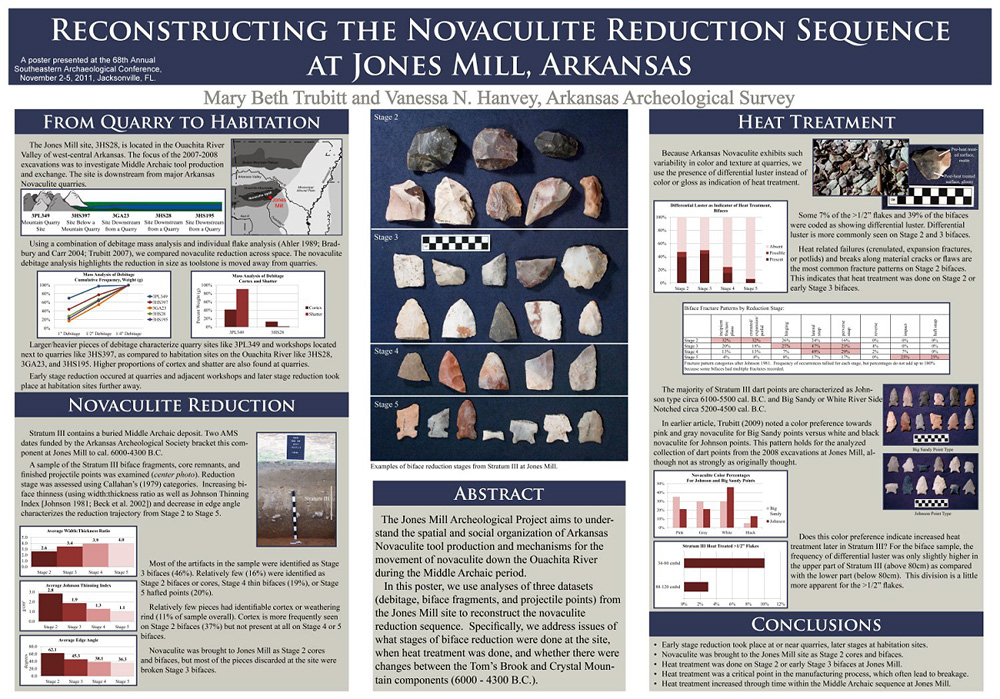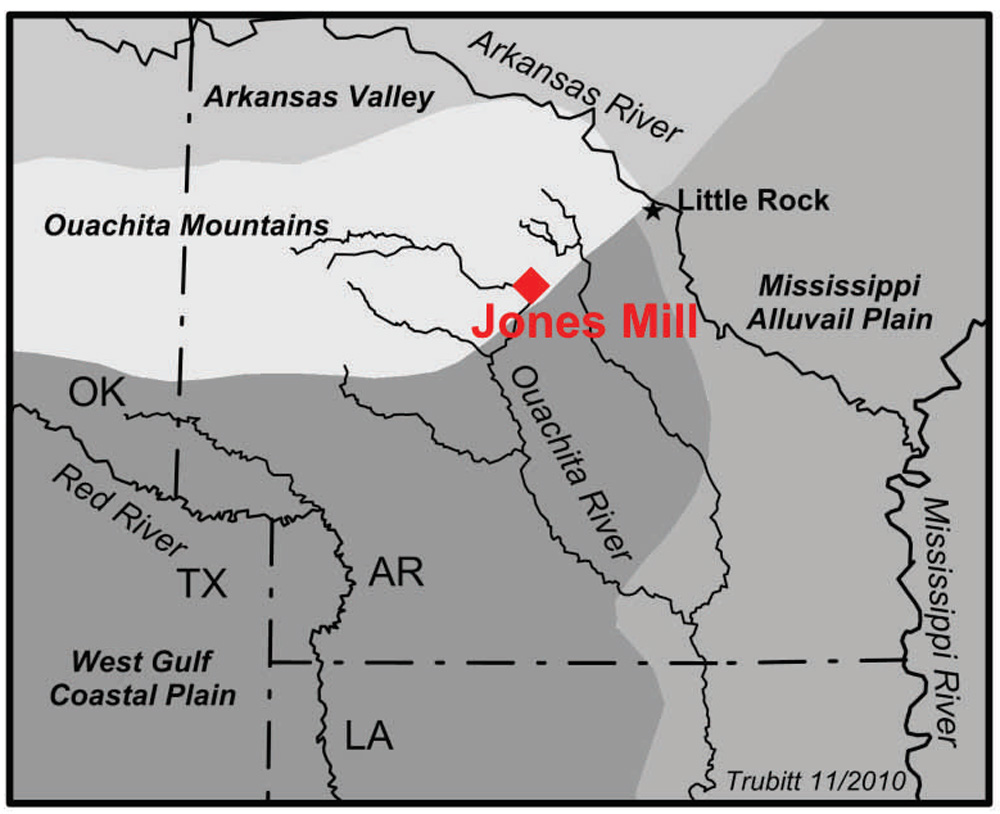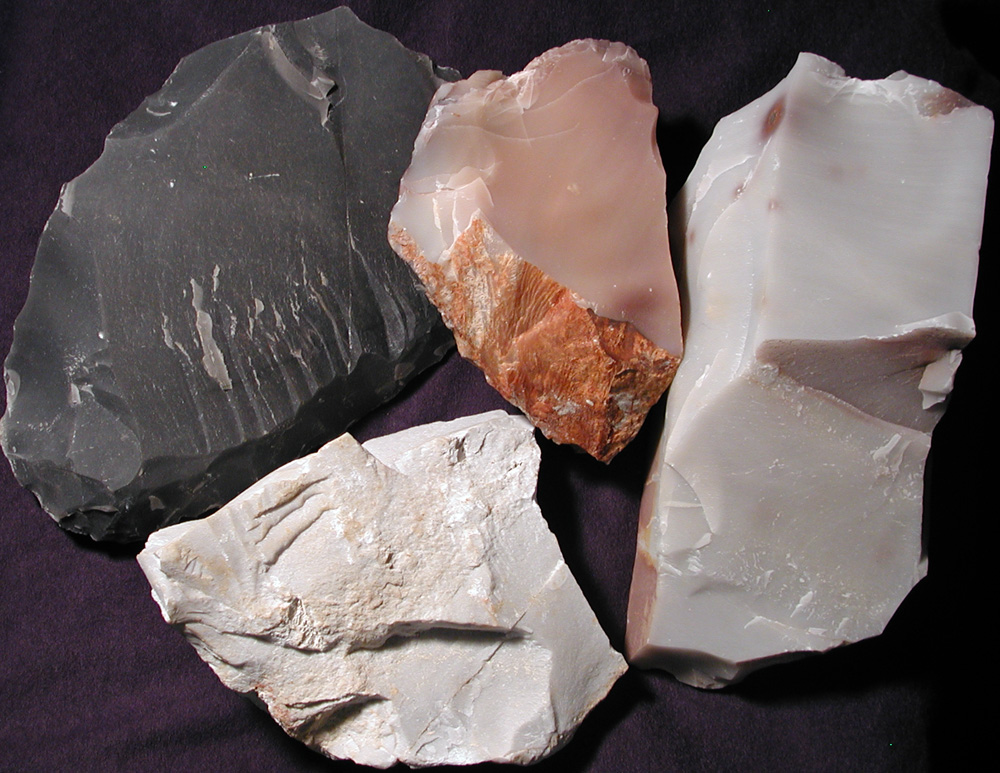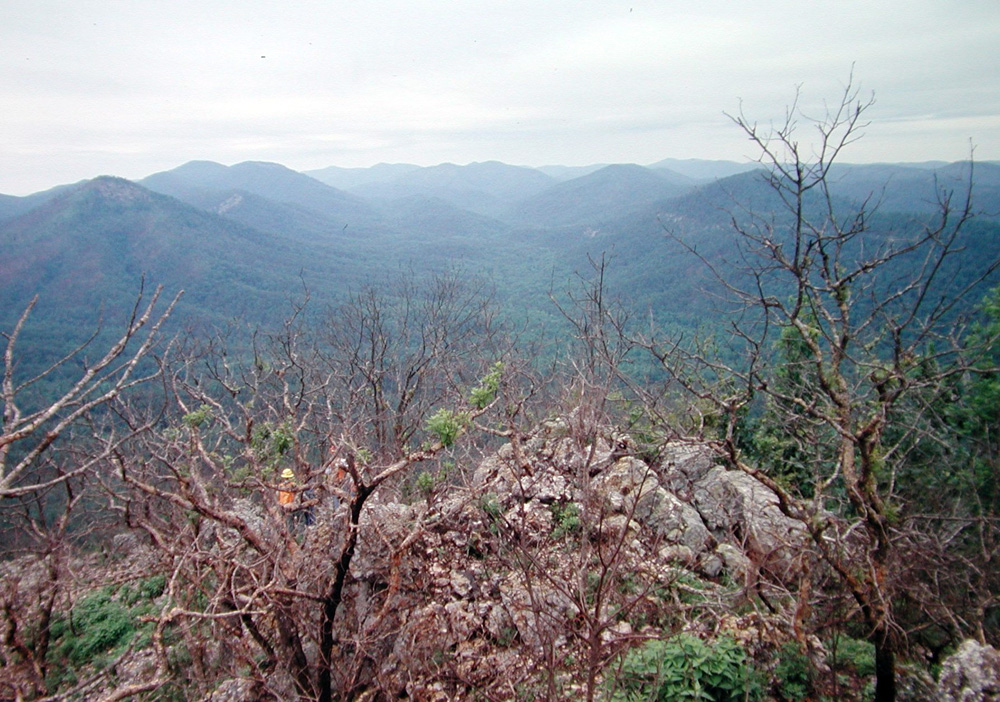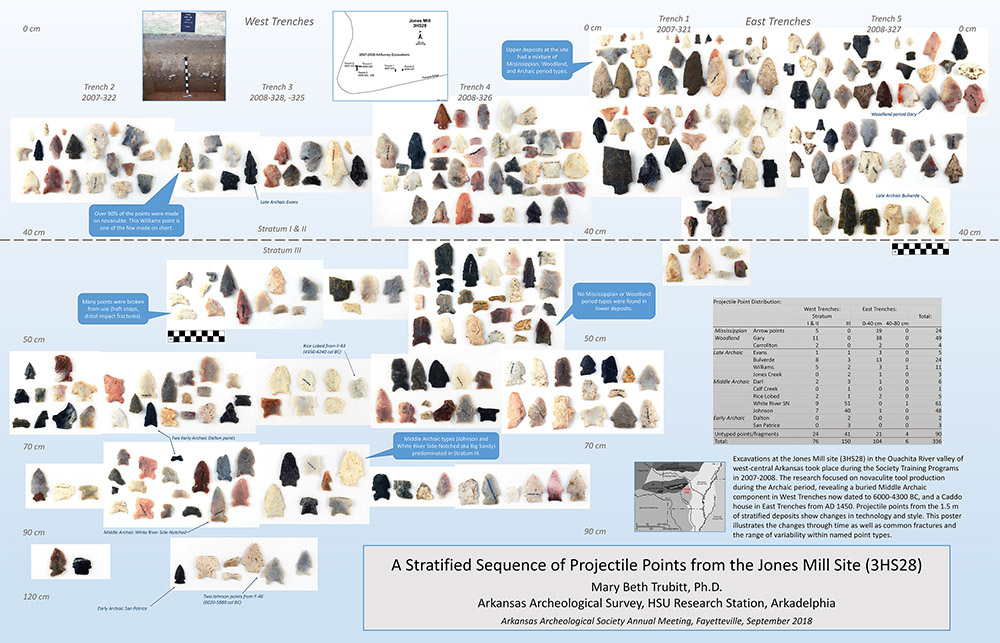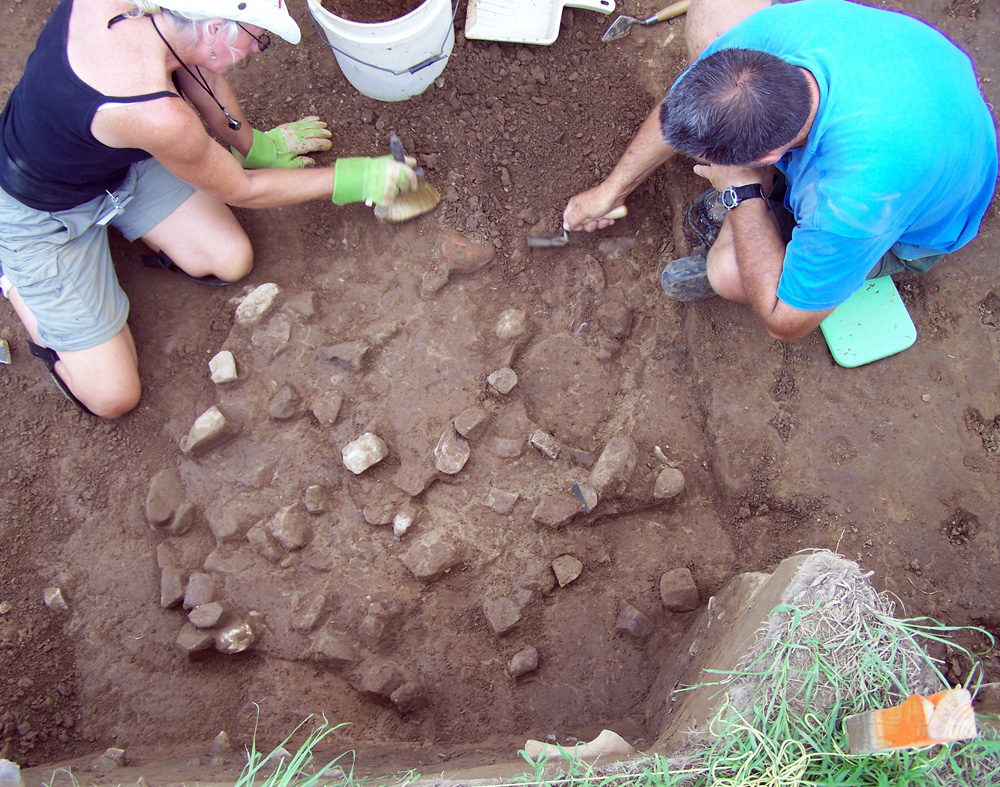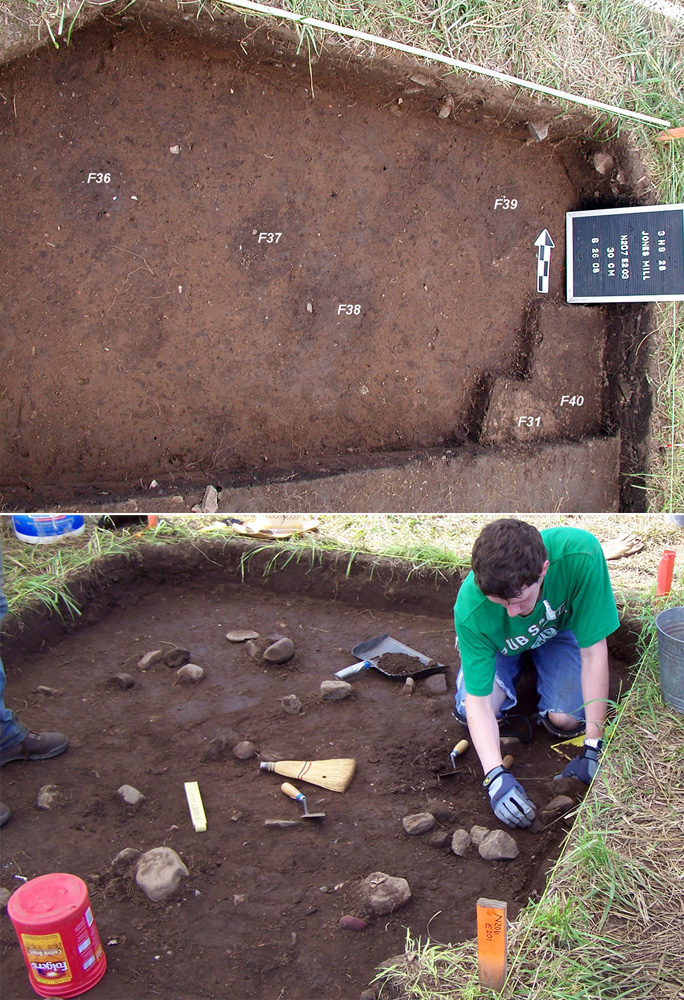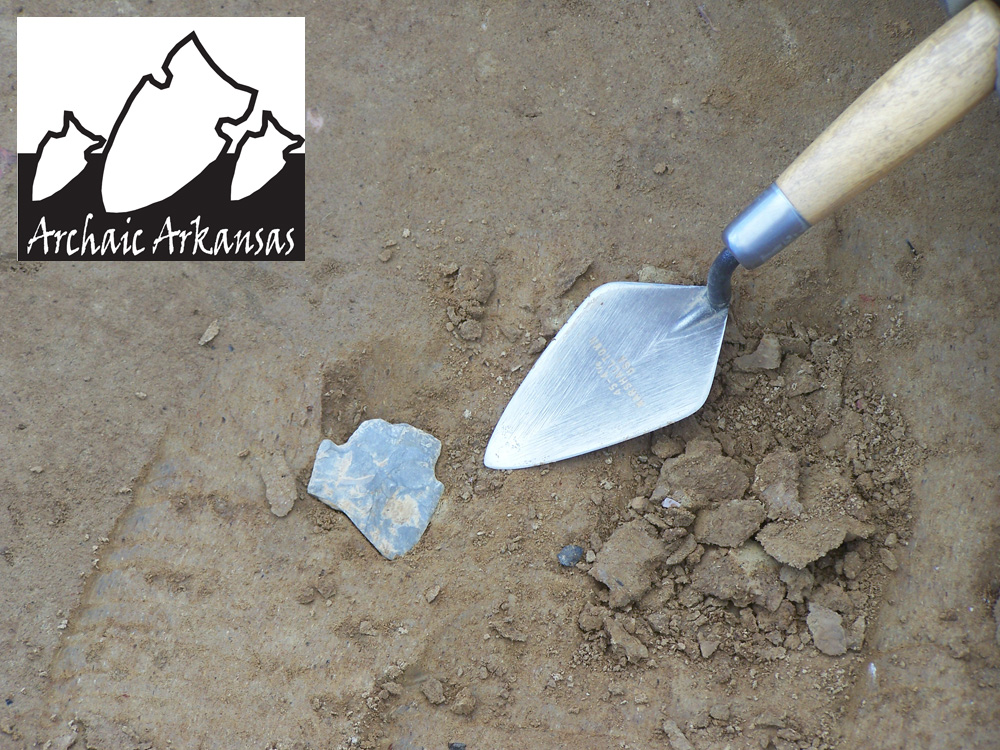Mary Beth Trubitt, Arkansas Archeological Survey (HSU Research Station)
In the summers of 2007 and 2008, a team of professional archeologists, amateurs, and students excavated at the Jones Mill site in Hot Spring County, Arkansas. This location, on a terrace overlooking the Ouachita River, downstream from modern-day Hot Springs, has been a good place to live for at least 8000 years. The significance of this site — and its research potential — led to its listing on the National Register of Historic Places in 1988.
This project sheds light on several aspects of Arkansas archeology and American Indian history in this region. Novaculite quarried from the Ouachita Mountains was used as a raw material for chipped stone tools by Indians living at Jones Mill. Novaculite and other resources may have been traded beyond this area during the Archaic period.
Based on the styles of artifacts found, and radiocarbon dating of excavated organic samples, ancestors of the Caddo Indians lived and worked here between 6000 B.C. and A.D. 1450. From these excavations we are learning how the ways of life changed through time — from the Archaic period through the Mississippian.
By detailed analyses of fragments of plants and animals from ancient food refuse excavated at the Jones Mill site, we can reconstruct ancient foodways. How did the Indians who lived here find food from their environment? Click here for results of the “Ancient Foodways” project.
An archeological project like this takes many people working together. The excavations at this site in 2007 and 2008 were part of training programs coordinated by the Arkansas Archeological Society and the Arkansas Archeological Survey. Through the annual Society/Survey Training Programs, people interested in archeology can become involved with professionals in archeological research.
Field excavations and on-going work in the ARAS/HSU Archeology Lab has involved students from both Henderson State University and the University of Arkansas in Fayetteville. The experience of working with a professor as part of a research team is useful for careers in anthropology and other fields.
